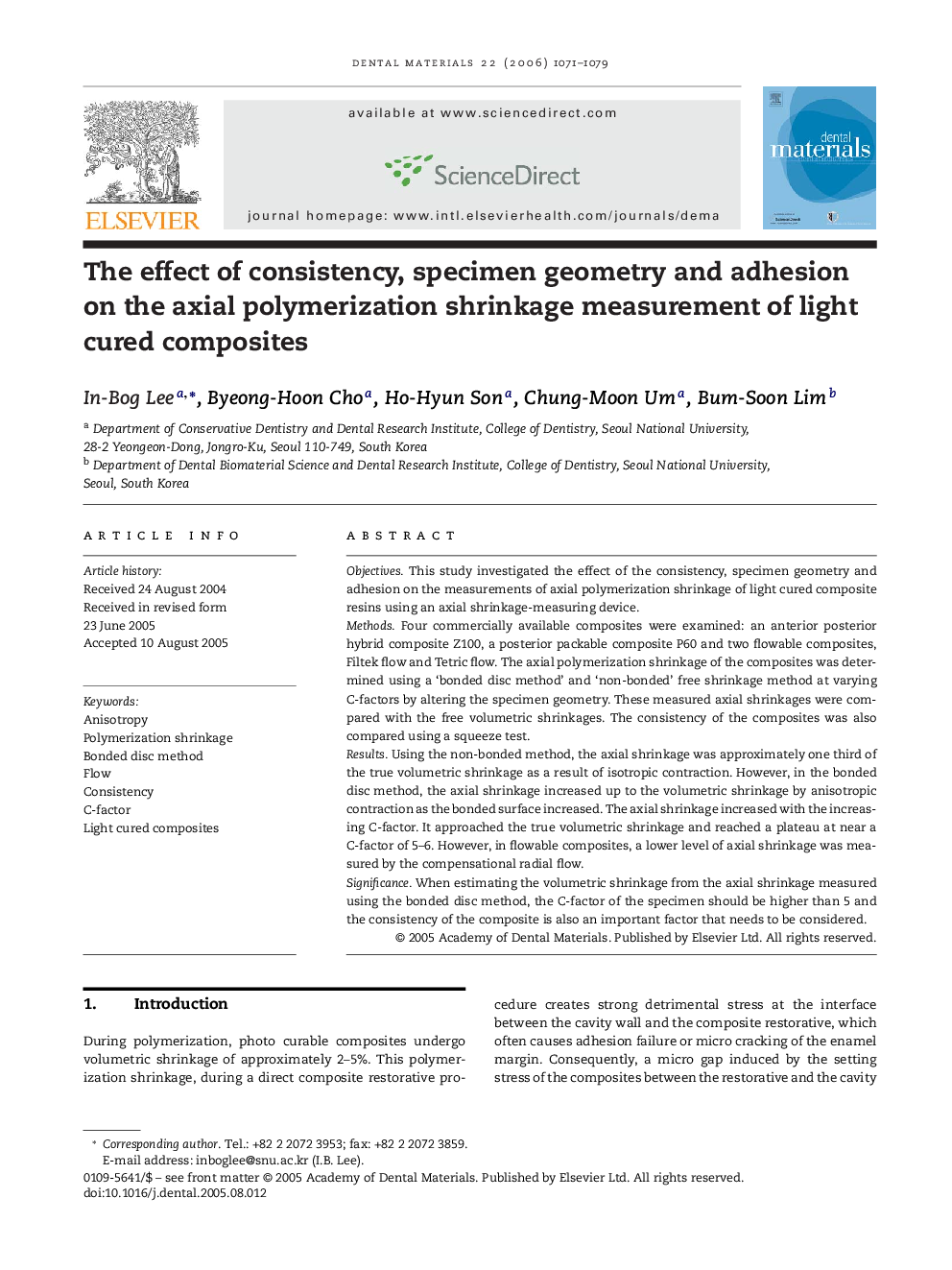| کد مقاله | کد نشریه | سال انتشار | مقاله انگلیسی | نسخه تمام متن |
|---|---|---|---|---|
| 1422566 | 986455 | 2006 | 9 صفحه PDF | دانلود رایگان |

ObjectivesThis study investigated the effect of the consistency, specimen geometry and adhesion on the measurements of axial polymerization shrinkage of light cured composite resins using an axial shrinkage-measuring device.MethodsFour commercially available composites were examined: an anterior posterior hybrid composite Z100, a posterior packable composite P60 and two flowable composites, Filtek flow and Tetric flow. The axial polymerization shrinkage of the composites was determined using a ‘bonded disc method’ and ‘non-bonded’ free shrinkage method at varying C-factors by altering the specimen geometry. These measured axial shrinkages were compared with the free volumetric shrinkages. The consistency of the composites was also compared using a squeeze test.ResultsUsing the non-bonded method, the axial shrinkage was approximately one third of the true volumetric shrinkage as a result of isotropic contraction. However, in the bonded disc method, the axial shrinkage increased up to the volumetric shrinkage by anisotropic contraction as the bonded surface increased. The axial shrinkage increased with the increasing C-factor. It approached the true volumetric shrinkage and reached a plateau at near a C-factor of 5–6. However, in flowable composites, a lower level of axial shrinkage was measured by the compensational radial flow.SignificanceWhen estimating the volumetric shrinkage from the axial shrinkage measured using the bonded disc method, the C-factor of the specimen should be higher than 5 and the consistency of the composite is also an important factor that needs to be considered.
Journal: Dental Materials - Volume 22, Issue 11, November 2006, Pages 1071–1079